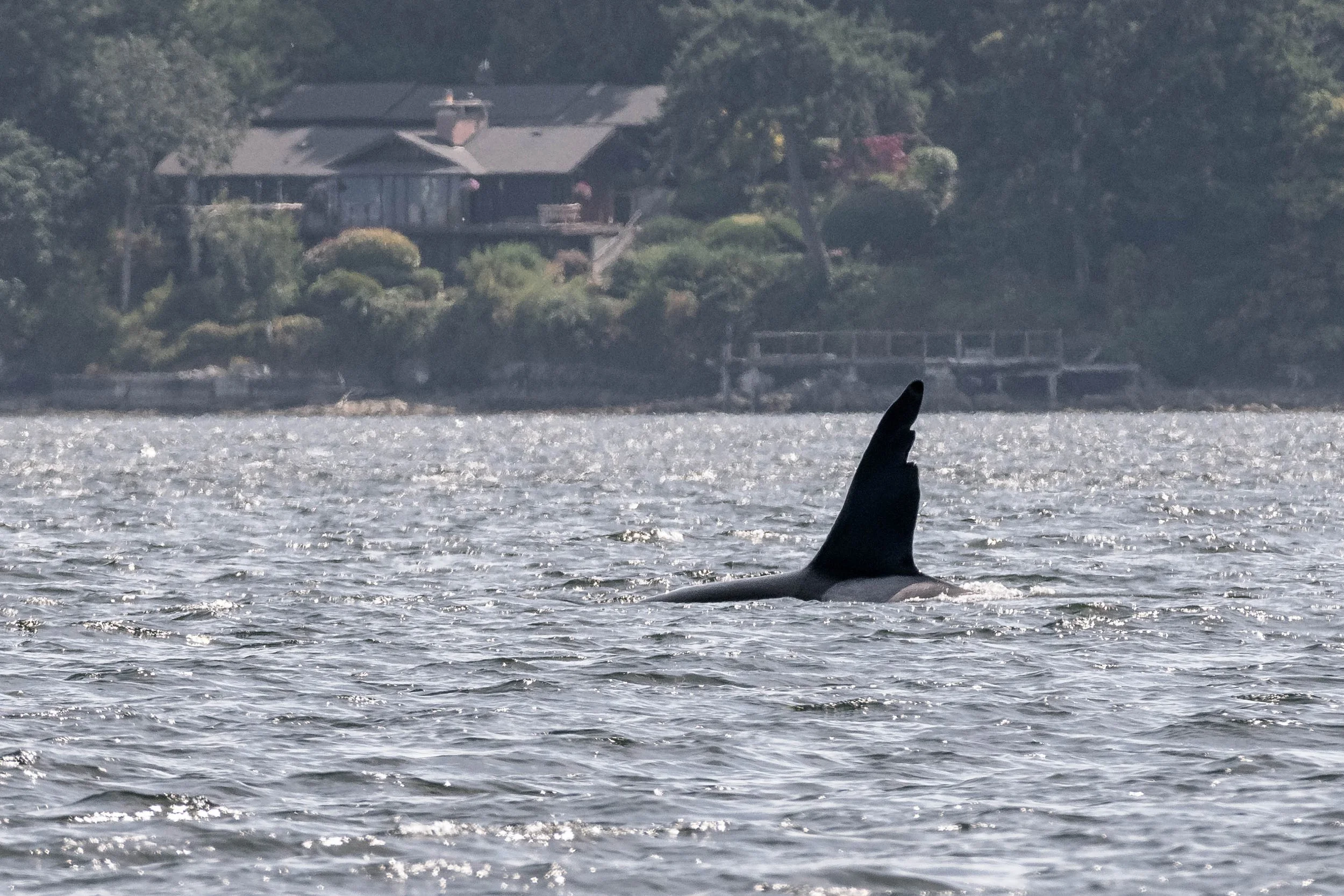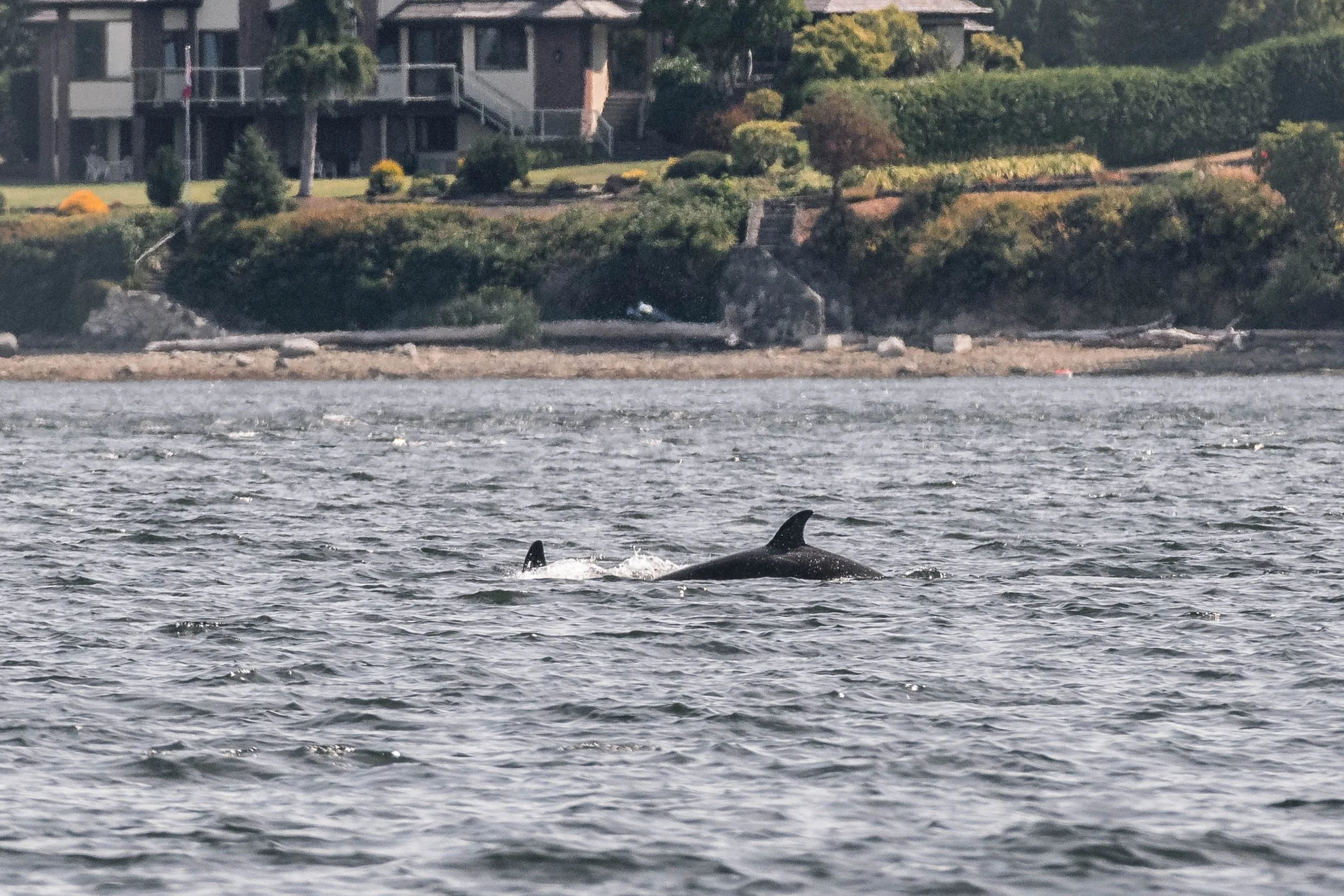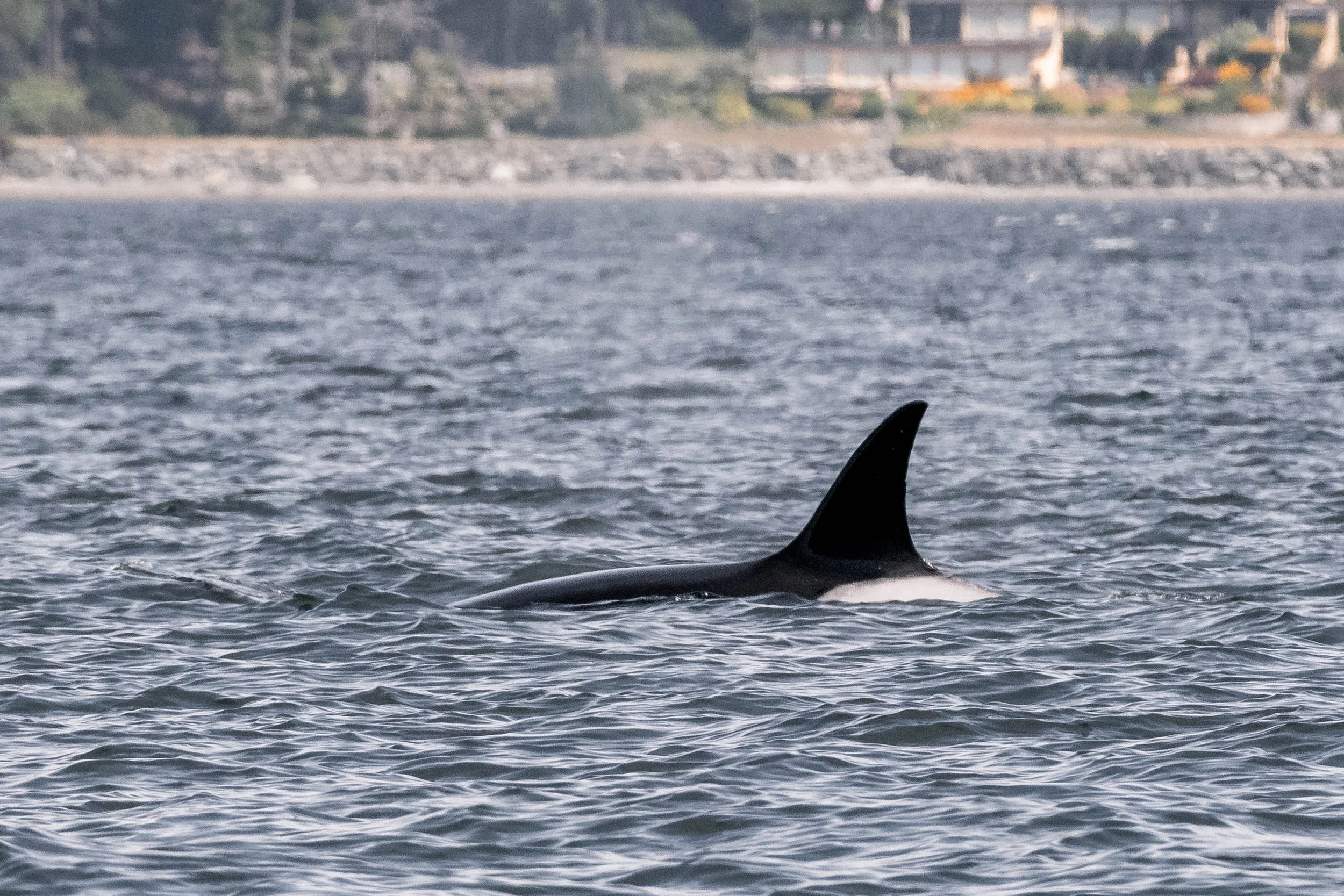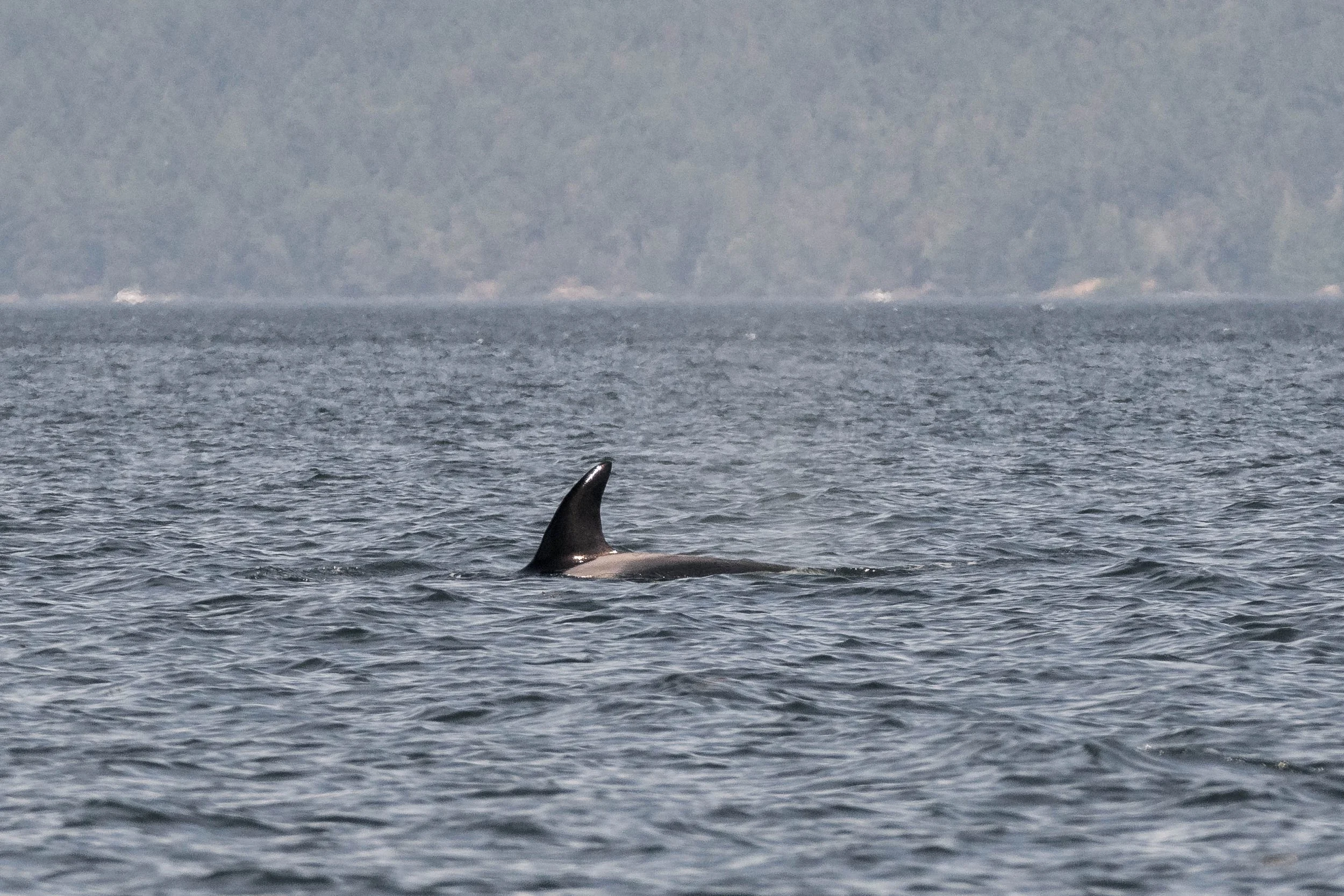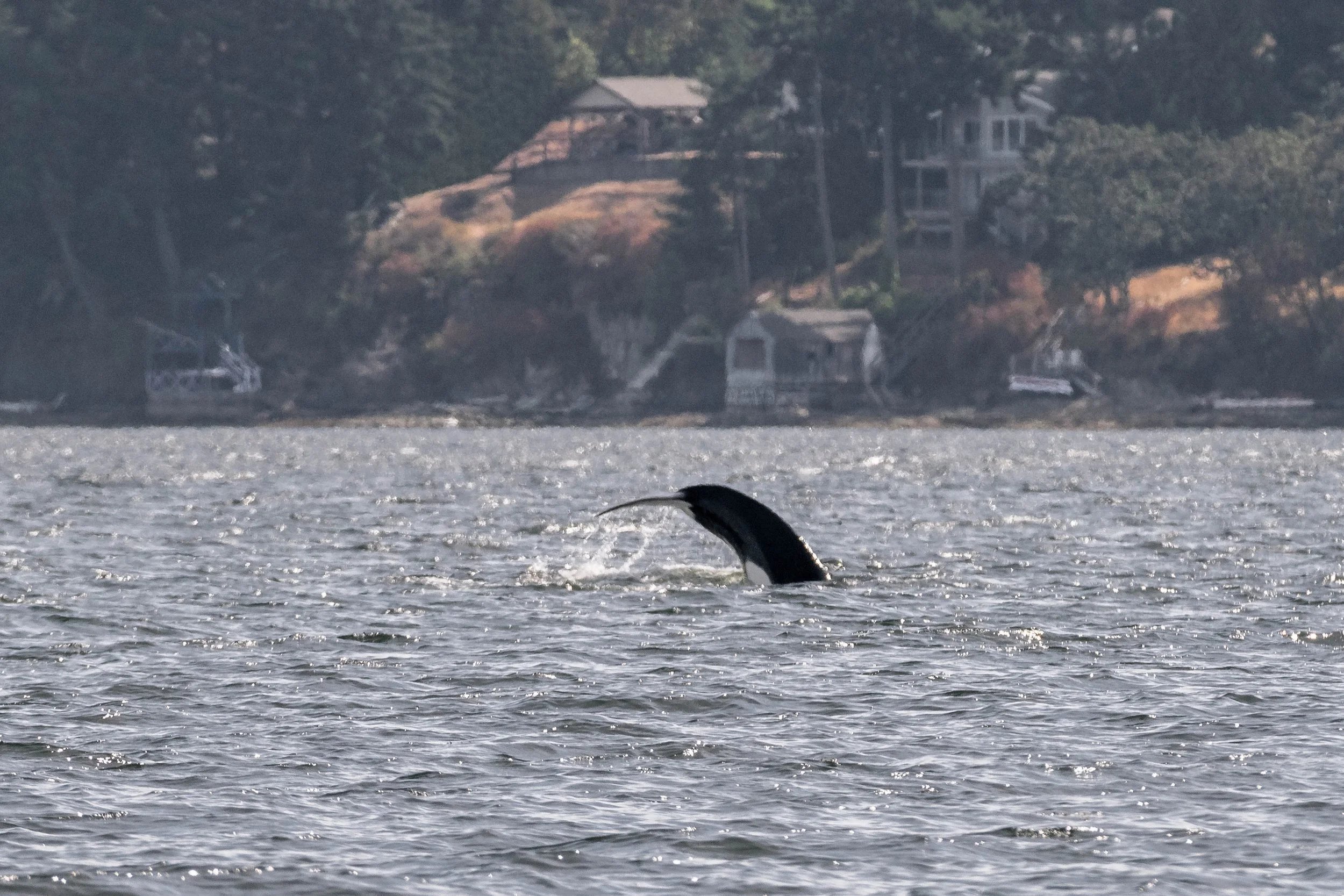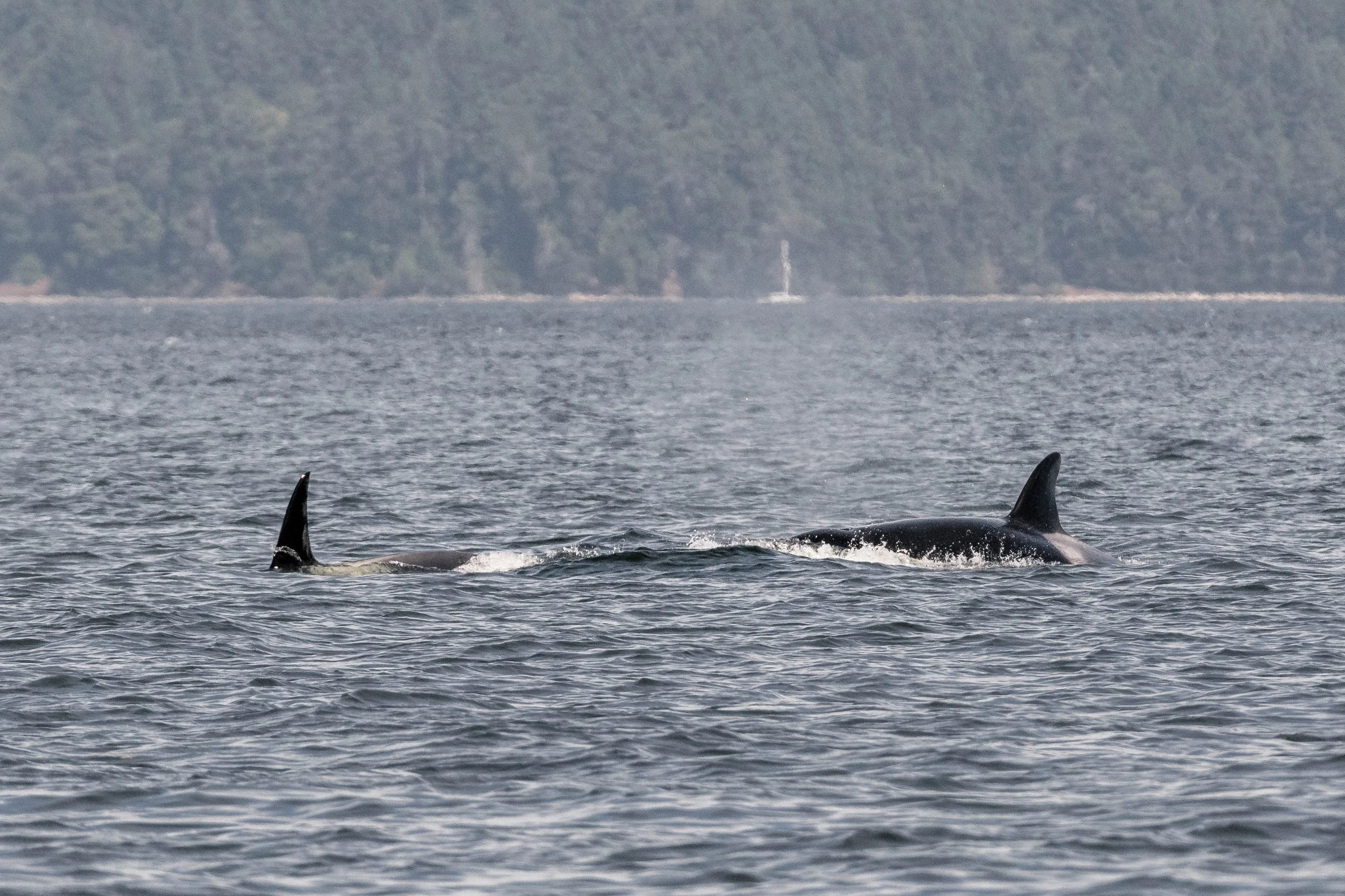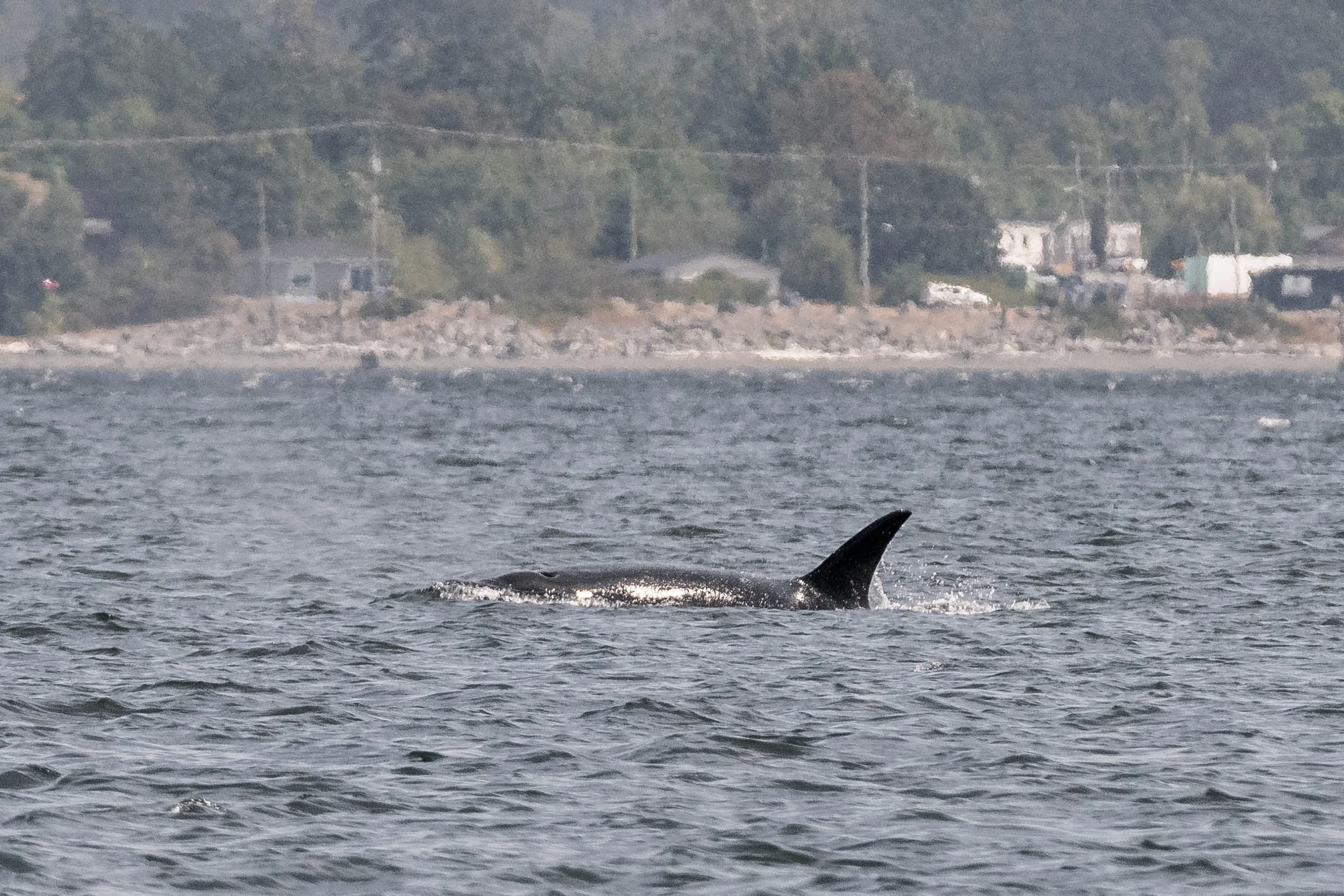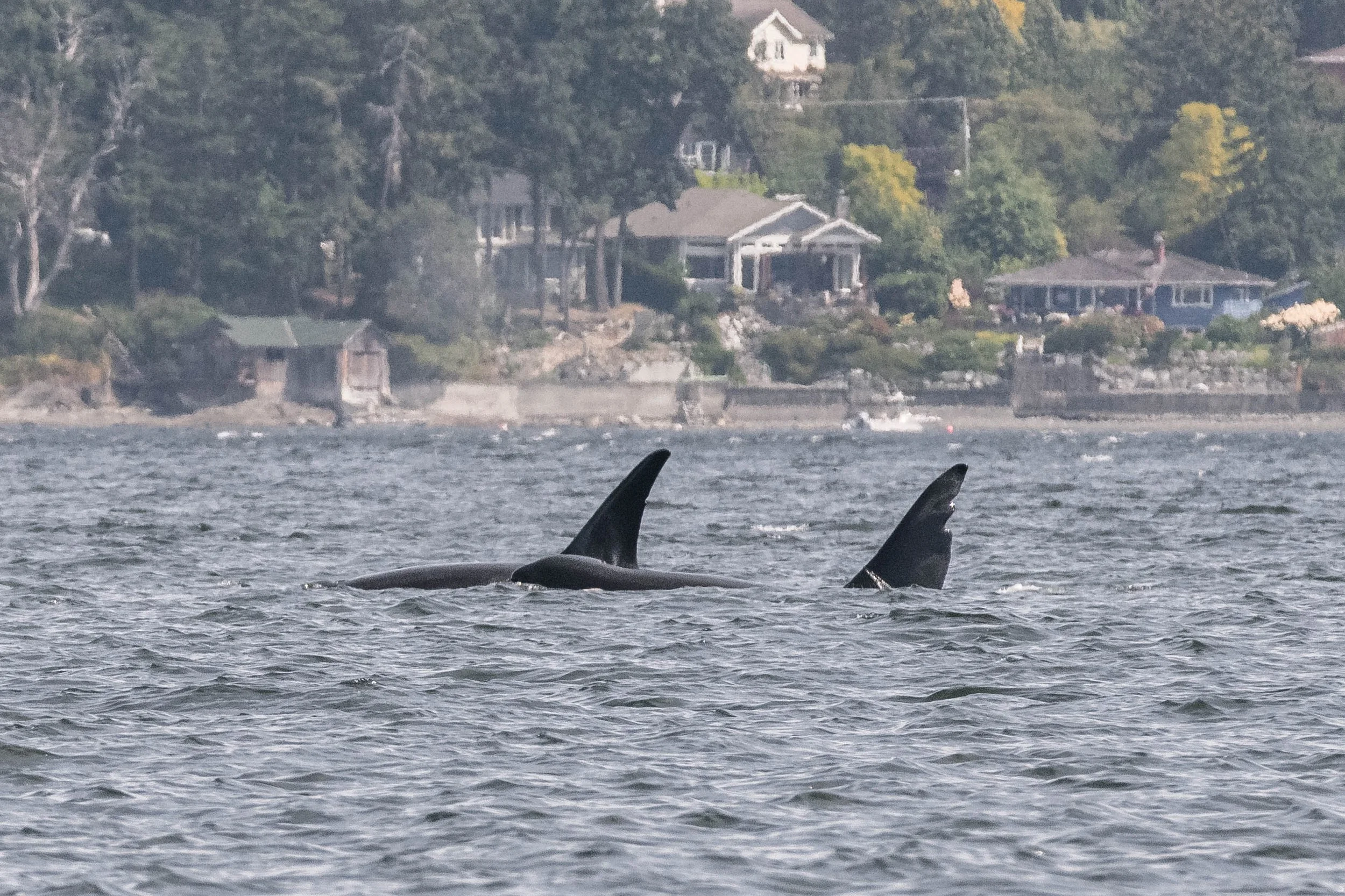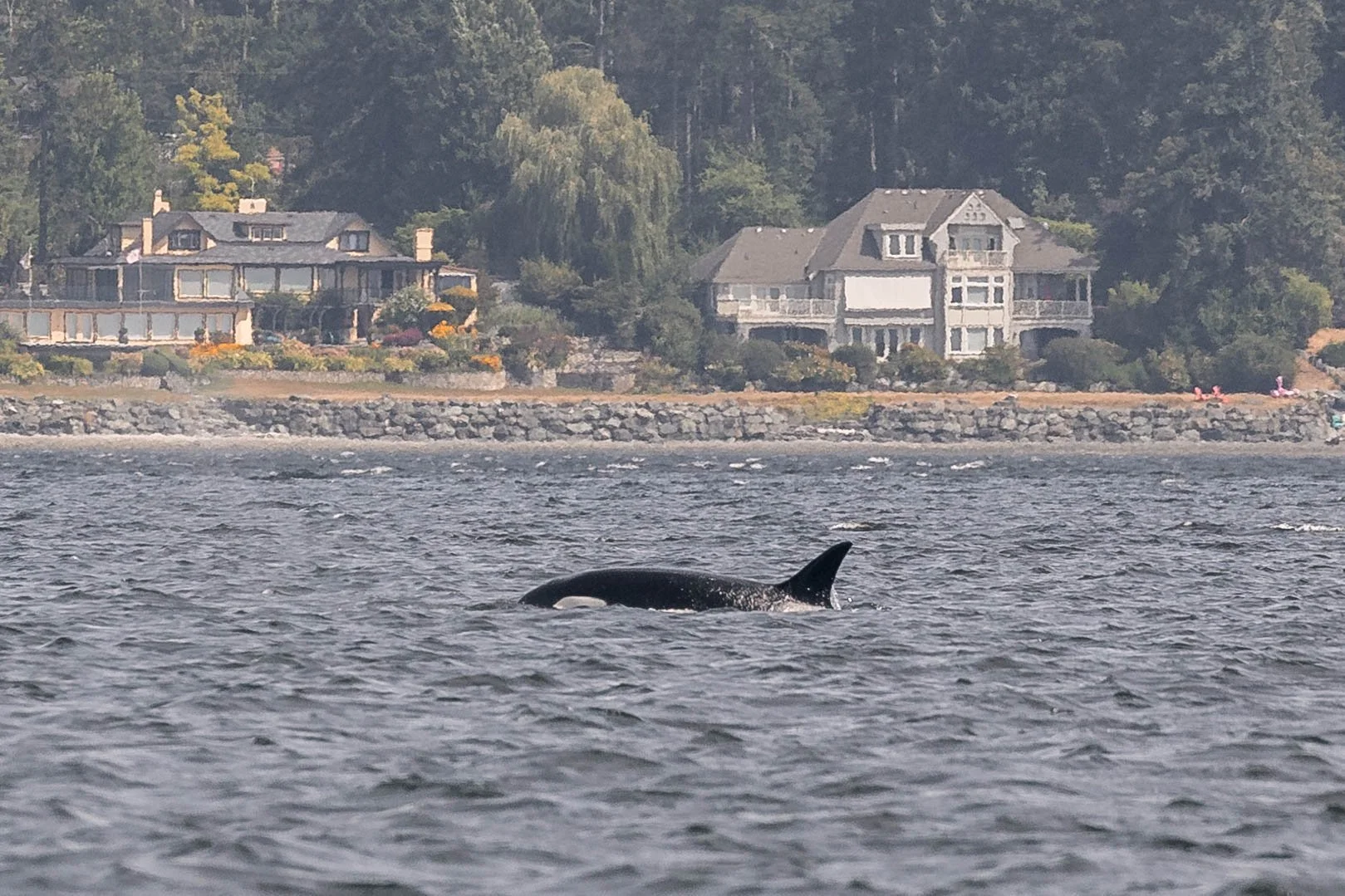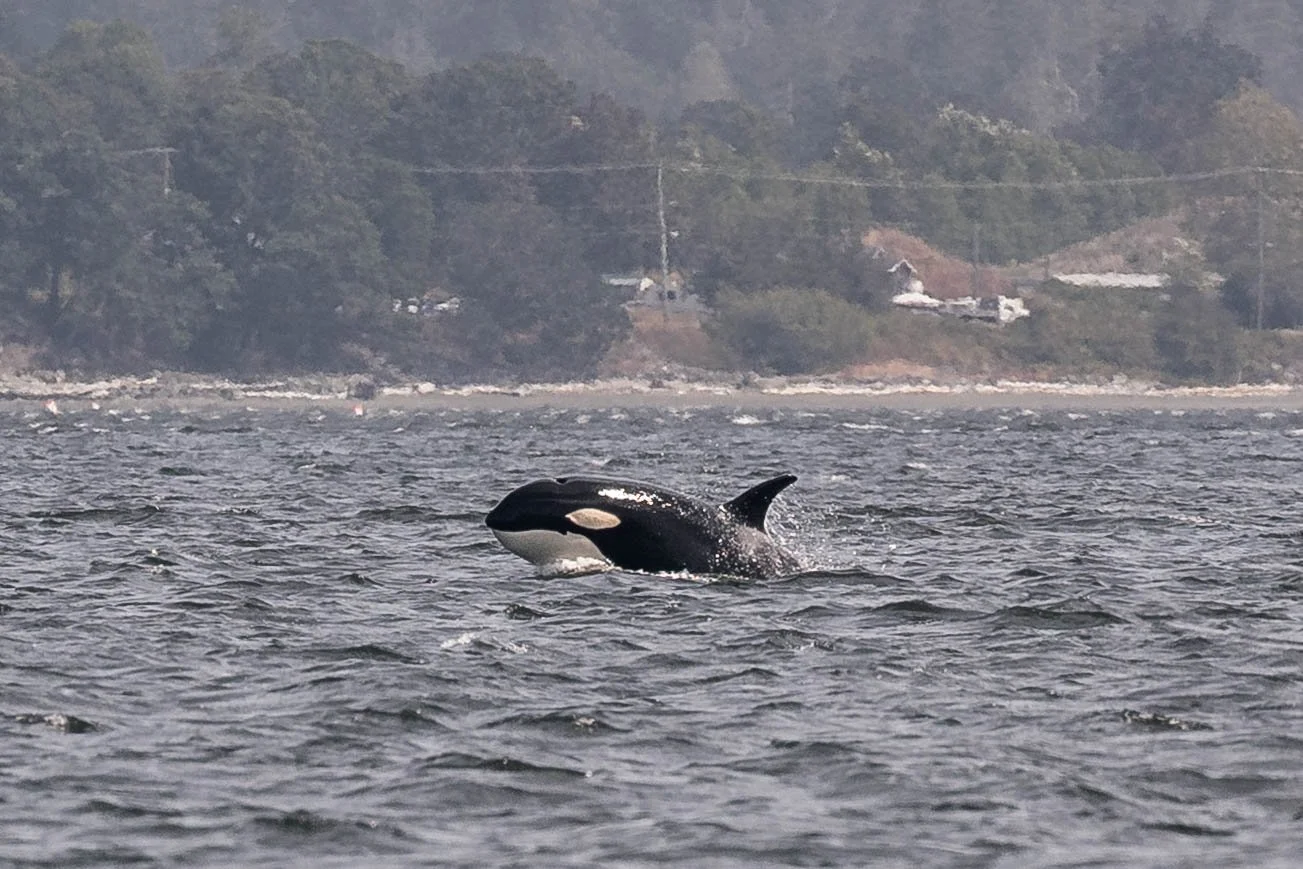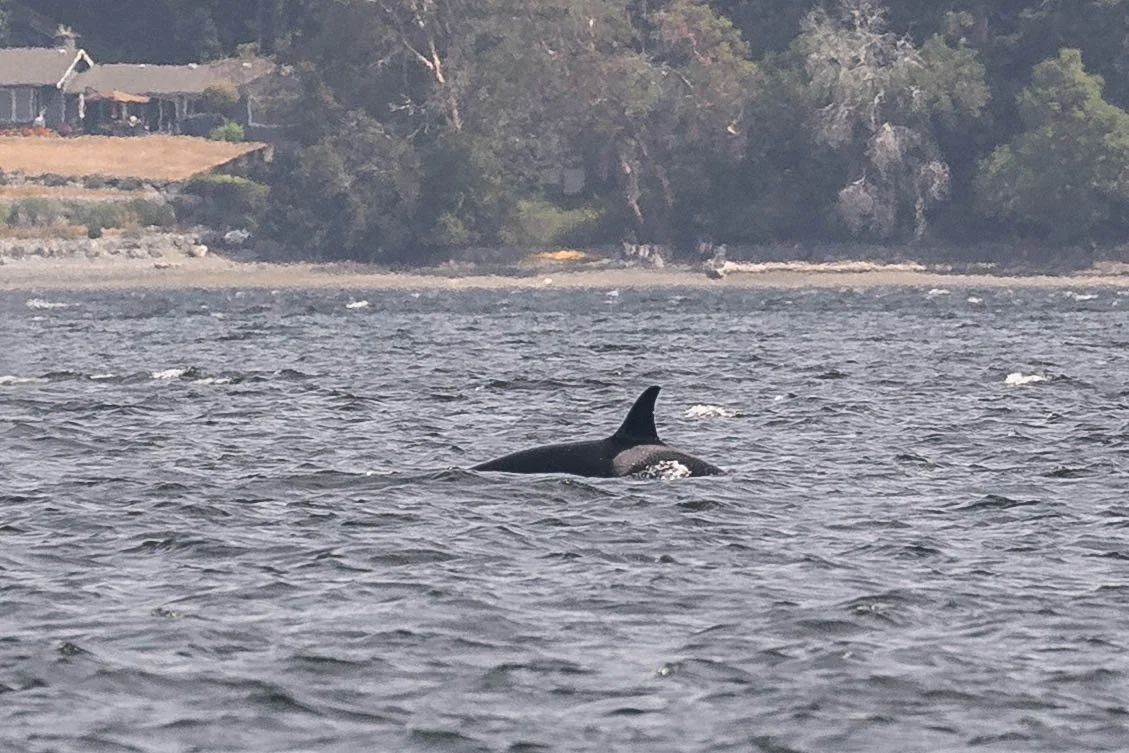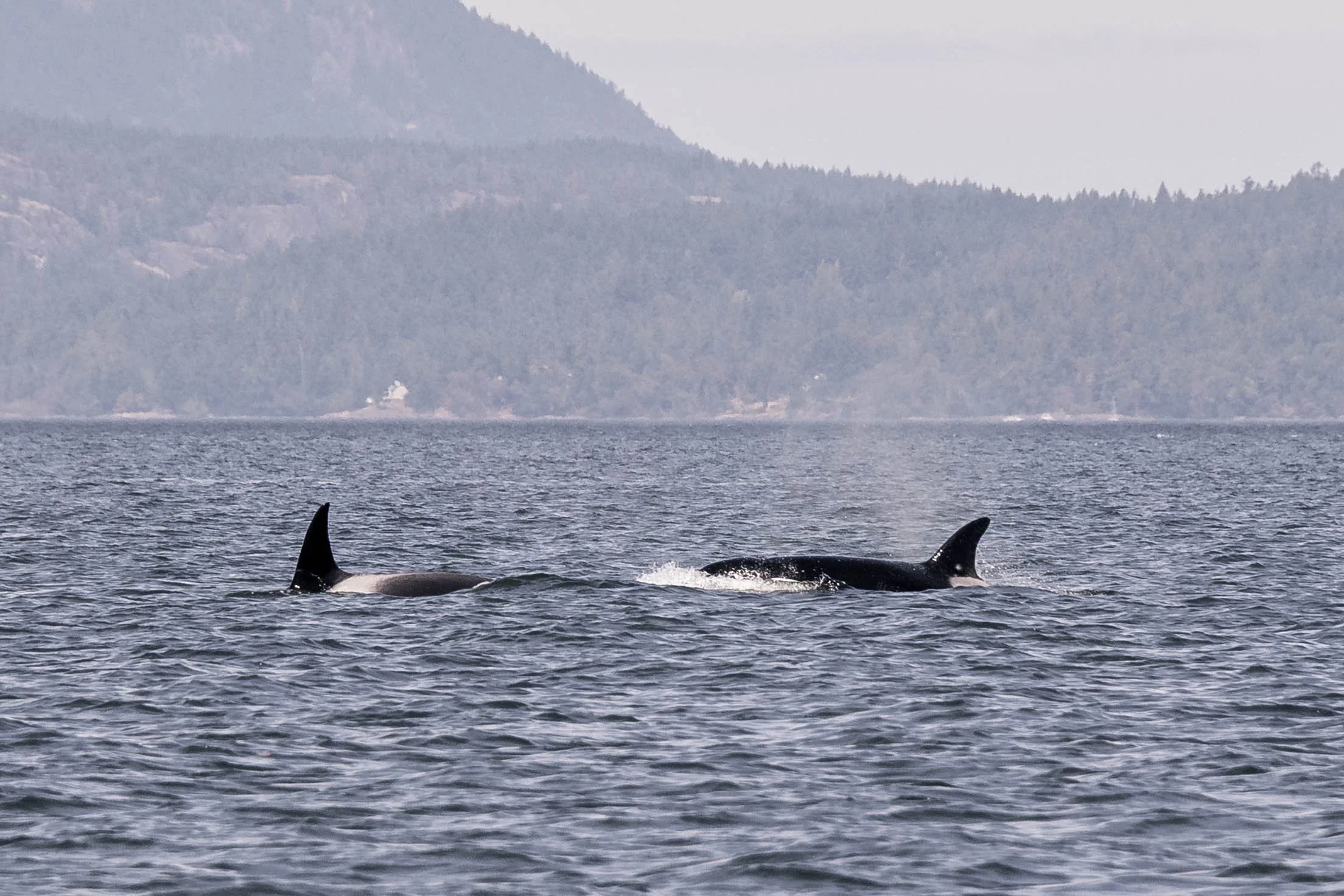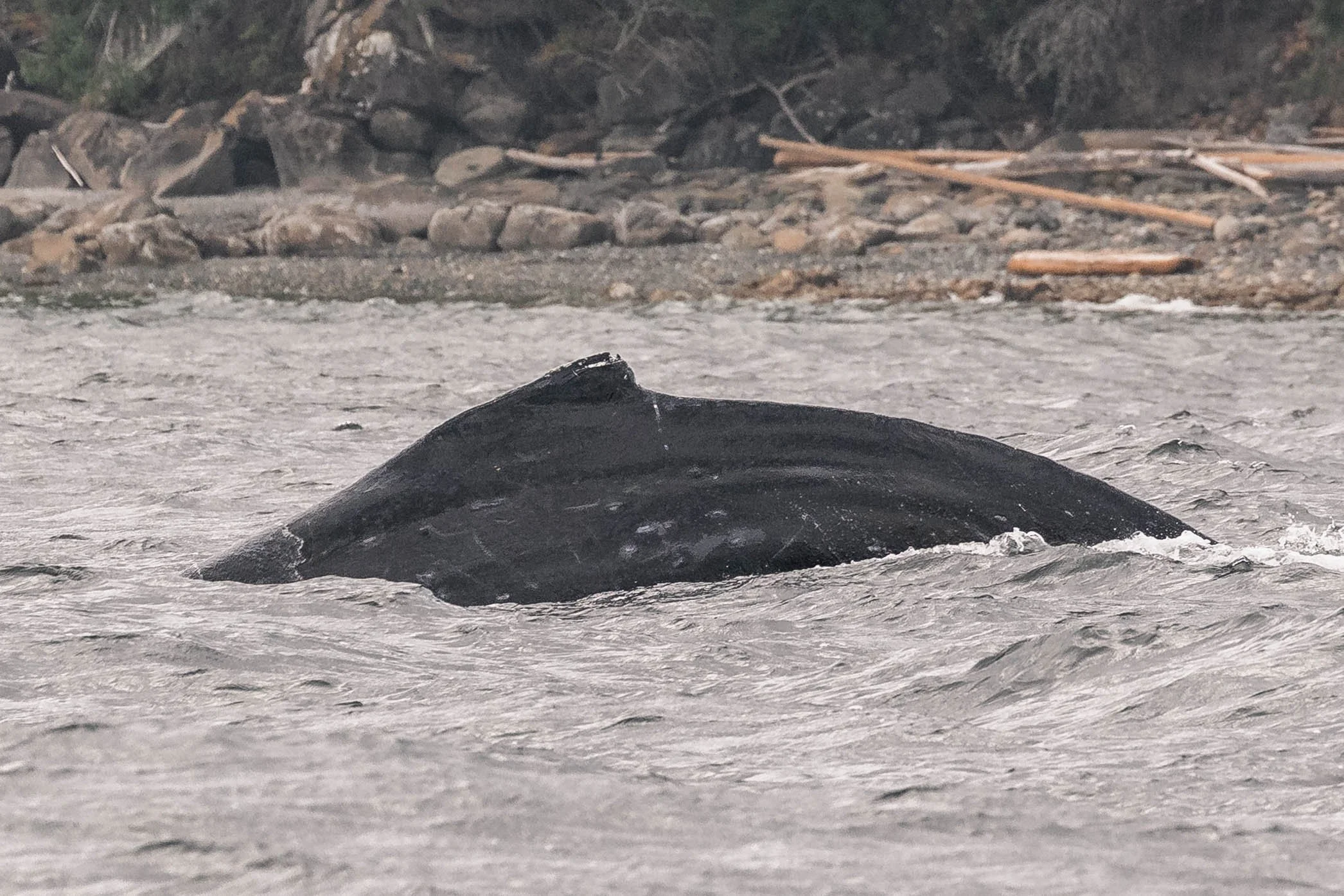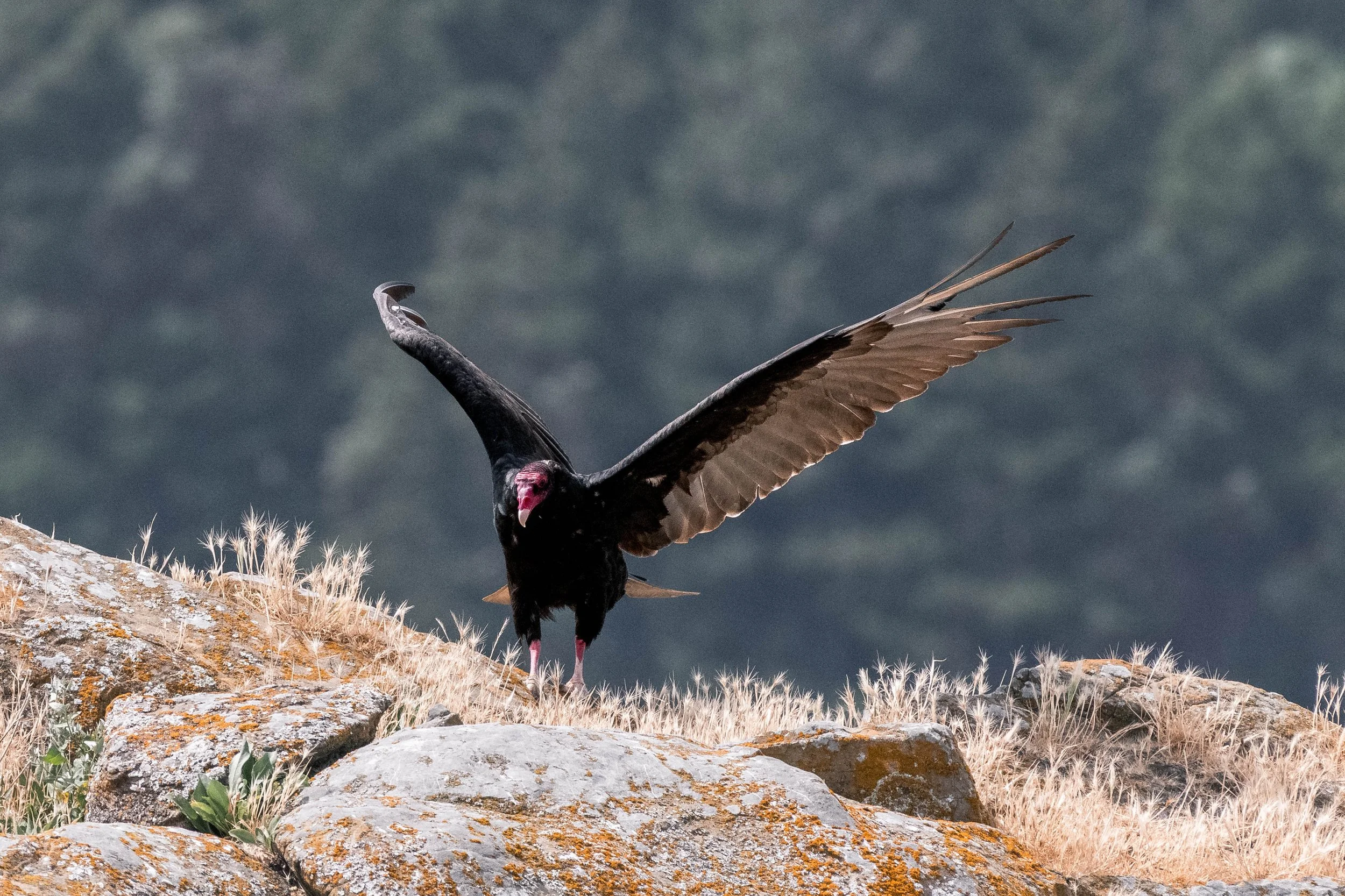August 14, 2025, 10:30 AM - An uncommon matriline in the Saanich Inlet (plus some friends)!
As our whole fleet pushed off the dock, we started the day’s journey by heading southbound through the Southern Gulf Islands. The boats split up to maximize our sightlines and coverage, eagerly scanning side to side in search of whales. Our waters are home to many whales, and surprisingly, none of them are tagged! This means that every tour is a new exciting adventure, and we never know where the day will take us - will we go North? East? South? We don’t truly know where we will venture until we get out there and start doing it!
After scanning for a bit, we received word of whales spotted in the Saanich Inlet, an area near Victoria. We changed our heading and started making our way. We cruised through Sansum Narrows, a gorgeous narrow waterway in the southern portion of our range. From here, we continued even further south until we entered the inlet where the whales were spotted! Once we entered the inlet, it wasn’t long before we spotted what we had been searching for: several black dorsals zipping around back and forth. Our onboard Naturalists began snapping photos of the whales present, and we concluded we were travelling with two matrilines - the T109As and T063 and T065:
T065 Whidbey Ⅱ ♀ (<1968)
T063 Chainsaw ♂ (~1978)
T109A Frio/Runaway ♀ (1990)
T109A4 Garrett ♂ (2012)
T109A5 Argyle ♂ (2014)
T109A6 Riley (2018)
T109A7 Wieland (2021)
T109A8 Weiss (2024)
If you have been on our blogs before, Chainsaw is likely a whale you have heard of. He is the whale featured on our logo, as well as on much of our merchandise! His two distinct notches make him one of the most easily recognizable fins in the Salish Sea.
The other six whales, though, are very uncommon in our area. The T109As are a matriline that we have only encountered once before as a company. They are more commonly seen around Victoria and Tofino. In early 2024, this matriline made international headlines when one of their members, T109A3 Spong, became stuck in a shallow inlet with her young calf T109A3A. Spong, unfortunately, became stranded on a sandbank and succumbed to her injuries, but her young calf survived. While she was stuck in the small inlet for roughly a month, she did eventually escape. The young calf was named kʷiisaḥiʔis or Brave Little Hunter after the ordeal. While her whereabouts are currently unknown, we are hopeful that she is continuing to survive in the vast ocean!
While we observed these eight today, there were many instances of them zigzagging and changing direction; the younger whales were also seen breaching and porpoising. They were likely excited about the opportunity to have a little social gathering with their family and Chainsaw and Whidbey II. Orca are very social animals, and meetups like this are likely crucial in the developmental stages of a young orca’s life.
Soon our time with the T109As, Whidbey II, and Chainsaw was up, and we had to depart, turning back northward up the channels of the Southern Gulf Islands. Our open vessels, Cascadia and Keta, headed out into the Strait of Georgia for a brief stop at Stinky Rocks. The tides were high, and there were a few waves, which resulted in all of the Steller Sea Lions bobbing along in the water. At the same time, Kula decided to peek around the inside and located a bob of Harbour Seals snoozing on some rocks. This slumber was quickly interrupted, though, as a Turkey Vulture landed behind them! This bird was likely landing for a brief rest before it would continue its adventures elsewhere.
After stopping with our pinnipeds, the open vessels entered back through Gabriola Pass, and the full fleet continued their journey back towards Nanaimo.
However, on the way back to harbour, we made a shocking discovery - just South of Dodd Narrows, a tiny waterway we cross as we make our way back to home port, a Humpback whale was spotted! This heavy traffic area is a relatively uncommon place for humpbacks to spend their time, but every once in a while, we will see them come through. This little one was doing rapid surfaces and deep dives, so we unfortunately had to say goodbye to it soon after locating it. We managed to snap a photo of their dorsal fin, though, and with this, we were able to identify the whale as Slice (BCX2487). Typically, we use the underside of a humpback whale's tail to identify it, but if a whale doesn’t cooperate, we can sometimes use its dorsal fin as well. Slice’s is a very unique shape, with quite a few scars and scrapes that we can use for cross-reference.
Please enjoy these photos by Marine Naturalists Cheyenne Brewster, Hayleigh Hilbert, and Aly Kohlman.
T063 Chainsaw. Photo by Aly Kohlman.
T109A8 Weiss following close to their mother T109A Frio/Runaway. Photo by Aly Kohlman.
T109A6 Riley zooming by. Photo by Aly Kohlman.
T065 Whidbey II. Photo by Aly Kohlman.
T109A5 Argyle. Photo by Aly Kohlman.
T109A5 Argyle. Photo by Aly Kohlman.
T065 Whidbey II. Photo by Aly Kohlman.
T065 Whidbey II slapping her tail at the surface. Photo by Aly Kohlman.
There were many slap-happy tails during the day’s encounter! Photo by Aly Kohlman.
T109A5 Argyle following closely to another. Photo by Aly Kohlman.
T109A Frio/Runaway. Photo by Aly Kohlman.
T109A4 Garrett and T063 Chainsaw. Photo by Aly Kohlman.
T063 Chainsaw and T109A4 Garrett - at only 13 years old, it’s impressive that Garrett is already almost the same height as ~47-year old Chainsaw! Photo by Aly Kohlman.
Tail flicking! Photo by Hayleigh Hilbert.
T109A Frio/Runaway. Photo by Hayleigh Hilbert.
Two of the young whales popping out of the water together! Photo by Hayleigh Hilbert.
T109A6 Riley porpoising along. Photo by Hayleigh Hilbert.
T109A6 Riley popping out of the water! Photo by Hayleigh Hilbert.
Coming in for a landing! Photo by Hayleigh Hilbert.
T109A6 Riley. Photo by Hayleigh Hilbert.
Flukes up! Photo by Cheyenne Brewster.
T109A Frio/Runaway and T109A5 Argyle. Photo by Cheyenne Brewster.
T109A4 Garrett’s unique dorsal fin. Photo by Hayleigh Hilbert.
Slice’s dorsal. Photo by Hayleigh Hilbert.
Sleepy Harbour Seals eyeing us up from the rocks. Photo by Aly Kohlman.
A nursing Harbour Seal pup. Photo by Hayleigh Hilbert.
Coming in for a landing! Photo by Aly Kohlman.
A graceful landing from a Turkey Vulture. Photo by Aly Kohlman.

